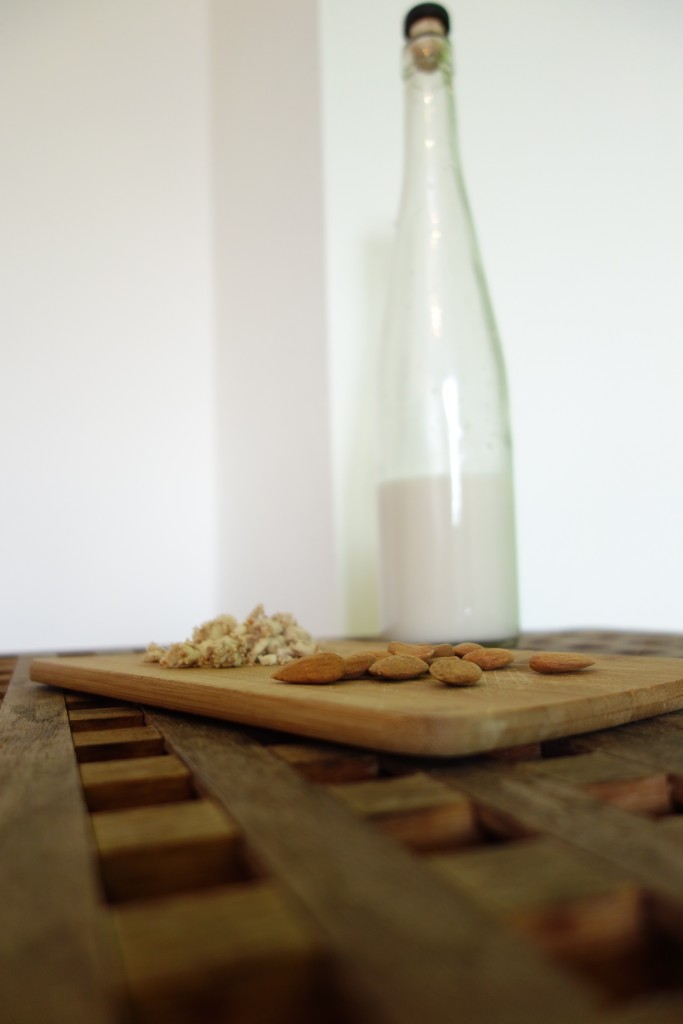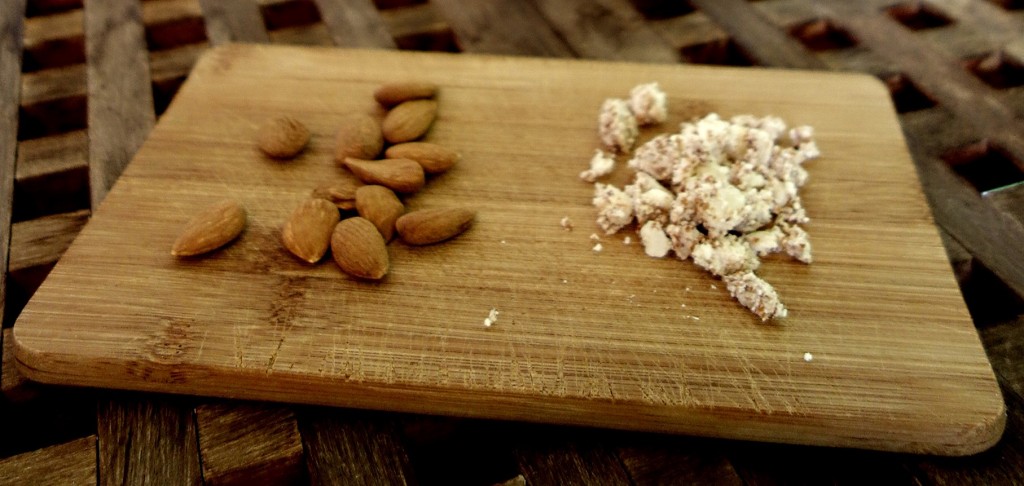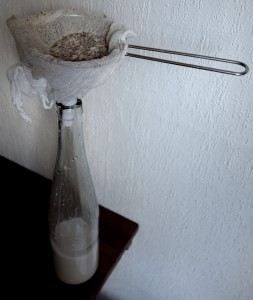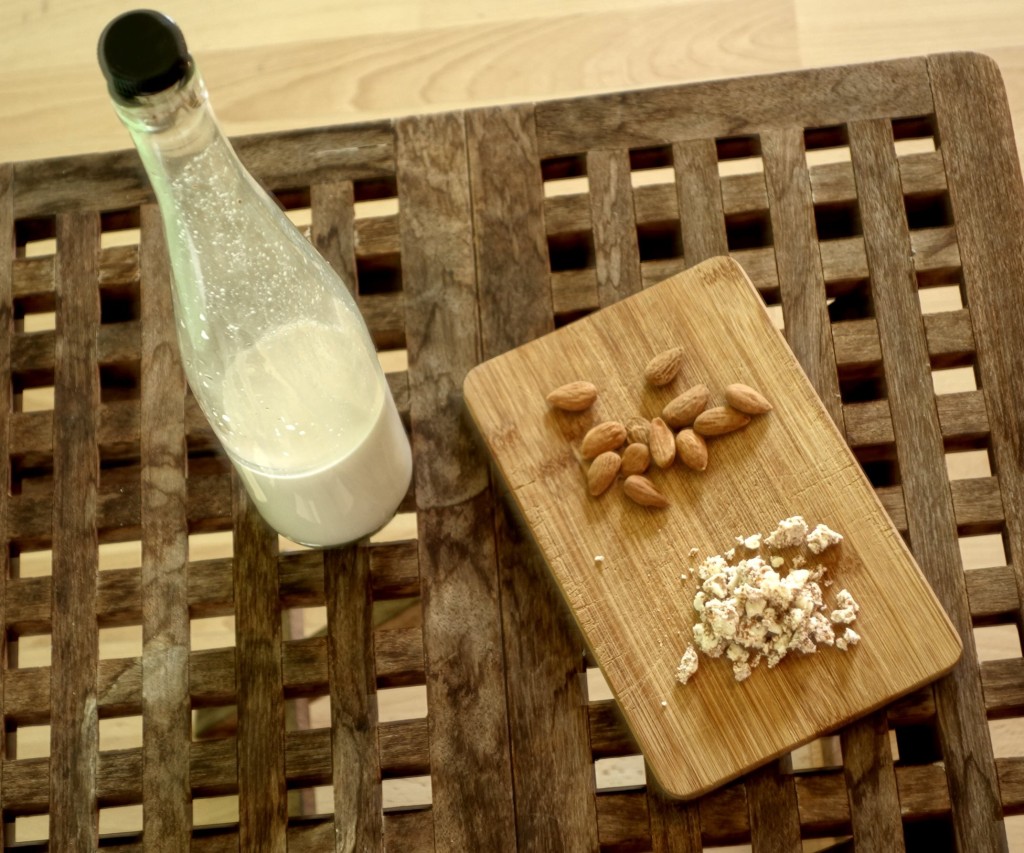
Almond milk is a delicious and healthy replacement for dairy derived milk or cream. Even if you are not a strict vegan, it will be a great addition to your diet, as it contains various beneficial and important nutrients and, consumed regularly, brings about some great changes in your overall health.
Nutritional value:
Almond milk is low in fat but high in lipids, fiber and energy supplying proteins. It contains no cholesterol and is a great source of vitamins E, B12, riboflavin, calcium and zinc, and, in lesser amounts, iron, magnesium and potassium.
Health benefits:
– Almonds are known for their ability to lower the LDL cholesterol levels in the body. In addition to that, almond milk supports health of the heart, reducing the risk of a coronary heart disease.
– Due to its high protein and riboflavin content, almond milk promotes healthy muscle growth.
– It can help lower the blood pressure and maintain it at a healthy level.
– It helps to nourish the skin and preserves its youthful looks, thanks to a high vitamin E content.
It is very easy to buy almond milk nowadays. If you choose to purchase it, rather than prepare it yourself, make sure you buy organic and check the ingredients for any strange sounding additives. The general rule is: the fewer ingredients, the better your milk. Unfortunately, often even if organic, the store-bought products will contain some preservatives (otherwise the almond milk’s validity wouldn’t be longer than a week).
I find that in addition to better quality and freshness, my homemade milk tastes much better than the one from a store. And it is ridiculously easy to prepare!
So if you are convinced and ready to start your own almond milk production, here is a “How-to”:

There are two ways you can prepare your almond milk: one uses blanched almonds, the other one with the peel. The method of preparation is essentially the same, but there is a slight difference in the taste of the milk (I tried both and was hardly able to tell them apart) and in the by-product, the almond pulp.
Milk made of blanched almonds has a milder, less prominent almond flavour (which for some will be a pro and for others a con), and it is easier to strain, as you can use a regular strainer only. The pulp will be softer and creamier, also milder in flavour. People who have tendencies to nut allergies may find that blanched almonds won’t affect them in any negative way.
Having said that, I still use my almonds unblanched. I like the flavour and aroma, and I’m trying to keep the processing to the minimum.
Try it out for yourself and see which option works best!

INGREDIENTS:
– ½ cup almonds (blanched or not)
– 1 ½ – 2 cups of water (the more water, the less “almondy” flavour and more liquid the milk)
– a pinch of salt
– some of you may like to sweeten your milk – use ½ – 1tsp of honey, stevia, maple syrup or any sweetener of your choice.
METHOD:
- Soak the almonds in a bowl. Use good water, fresh spring, filtered or mineral, as it will penetrate into the nuts and become a part of your milk. I leave them to soak overnight but if you forget to do it in the evening, 4-5 hours will also do. Some refrigerate them while soaking but I just leave them on the kitchen counter until they are ready to use.
- Rinse the almonds with fresh water and drain.
3. Soak for another 5 minutes in hot water – this is optional but will additionally soften the almonds which will facilitate the blending process.
facilitate the blending process.
4. Rinse again in fresh water and drain.
5. Transfer to a blender and add about 1 cup of water.
6. Blend on high speed for 5 min. Add more water to your liking* (another ½ cup for creamier consistency or 1 cup for a more liquid version that will go best with a coffee, tea or as a drink), and salt and sweetener, if using any. Blend again for several minutes, until there are no distinguishable almond chunks or pieces left.
7. Strain through a cheesecloth lined sieve or strainer (for blanched almonds a sieve with small openings would also do), squeezing the liquid out.
8. Your almond milk is ready to use! Store it in a refrigerator for a maximum of 3-4 days.
9. Use the leftover almond pulp as a thickener for curries or sauces or as an addition to smoothies or deserts. Or just eat it with a spoon, it’s so delicious!
*If you intend to use your almond milk in cooking, in curries, deserts etc, add less water and the end result will be thicker and creamier.

Enjoy your almond milk and don’t forget to share your experiences with us!
